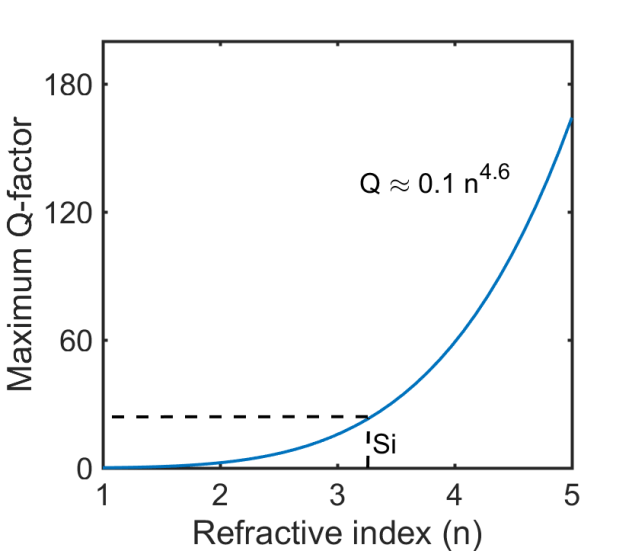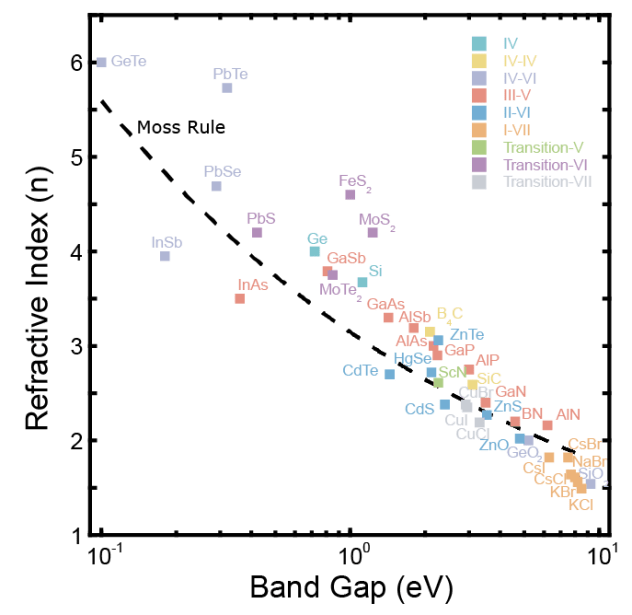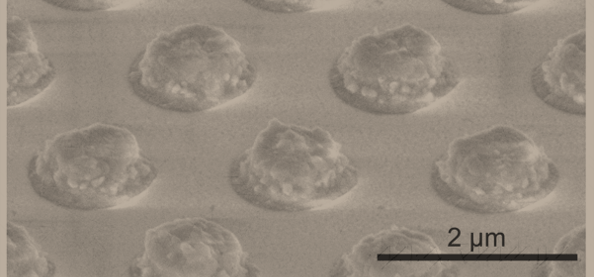The refractive index is an important design parameter of an optical material. The higher the refractive index, the better the material’s ability to confine light in it. High-index materials are essential to miniaturizing optical elements and enabling display and imaging technologies such as virtual reality (VR).

The performance of nanoscale optical elements is best captured by their quality factor (Q-factor). The Q-factor depends strongly on the refractive index (n) of the optical material as shown in the left graph. The state-of-the-art material, silicon, is limited to Q-factors of about 20.
High-refractive index materials are not easy to find in nature. As the refractive index goes up, materials become lossy. The refractive index and the absorption edge (bandgap) of materials exhibit a trade-off, popularly known as Moss’ rule. The refractive index and bandgap of many common optical materials are shown in the right graph.
 Though most materials follow the Moss rule (dotted line in the graph), some materials stand out. We call them super-Mossian materials.
Though most materials follow the Moss rule (dotted line in the graph), some materials stand out. We call them super-Mossian materials.
Naik group in collaboration with Prof. Jacob Khurgin from Johns Hopkins University identified a recipe for such super-Mossian materials. Then, we searched 1056 materials in the material database to choose fools gold or iron pyrite (FeS2) as a promising candidate for nano-optical devices. We developed a technique to grow thin films of FeS2, pattern them into nanostructures, and demonstrate a metasurface. More details of this work may be found in our published paper, and this news release.
